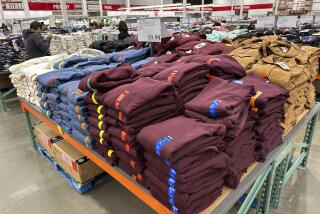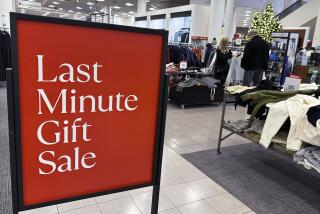Next Retail Challenge
NEW YORK — Margaret Lowe, who has always loved finding a good bargain, admits she’s become addicted amid all the heavy discounting that defined this holiday season.
“Who wants 20% when you can now get 40%?” said the Palm Coast, Fla., resident while shopping at Rockefeller Center. As for buying anything at regular price for the spring and beyond, she responded, “Not anymore.”
Lowe and many other shoppers present a challenge for retailers as they start to bring in spring merchandise: How do they wean customers off discounts and get them to pay full price? Can shoppers just go cold turkey and do without discounts, particularly in an economic environment that’s not expected to improve until later in 2002?
“Consumers were already hardened before,” said Wendy Leibmann, a New York-based trend consultant. “Now, they are really hardened. Even 20% discounts look stingy.”
The issue might be even more critical for upscale retailers, such as Bergdorf Goodman, Saks Fifth Avenue and Brooks Brothers, all of which resorted to unprecedented holiday discounting to entice customers to buy.
The deals are even more generous now as retailers try to get rid of mounds of holiday leftovers to make room for spring merchandise.
At Saks’ New York store last week, racks of already discounted designer merchandise were marked down an additional 40%. A Giorgio Armani suit, with an original price tag of $2,250, was twice marked down, and could be purchased for $809.
Brooks Brothers featured big red signs that announced additional discounts anywhere from 30% to 50% off already reduced merchandise.
Such heavy discounting is not only disastrous for a retailer’s profit, but also could harm a tony brand image.
“Luxury retailers significantly overreacted. Their brand hasn’t been eroded yet, but they can’t do it again,” said Steven Skinner, a partner of retail strategy at Accenture, a consulting firm.
Department stores and specialty retailers are under particular pressure from heavy discounting.
Kurt Barnard, president of Barnard’s Retail Trend Report, based in Montclair, N.J., noted that “customers received an education probably as never before in terms of values and in terms of pricing and in terms of playing one store against the other.”
Skinner said, “If retailers continue to mark down, they begin to send a signal that maybe they were overpriced to begin with.”
Wal-Mart Stores Inc., known for its everyday low pricing, is one merchant that doesn’t seem to have that problem. It reported better-than-expected holiday sales gains of at least 6% with “minimal markdowns”--a testament to its pricing power.
Other retailers hoping to escape the markdown trap need to start working toward that goal now, analysts say.
Skinner said upscale stores should eliminate any big “sale” signs, opting for more subtle alternatives. For example, the Giorgio Armani store in San Francisco keeps its marked-down merchandise in a back room, he said.
Barnard believes retailers should try to gradually wean consumers away from discounts.
Above all, merchants must focus on innovative products and upgrade their services to persuade customers to buy at regular price, trend consultant Leibmann said.
“You constantly have to have new items that no one else has,” she added.
That has worked well for Bloomingdale’s, which offered fewer discounts than a year ago, but still was able to meet its modest holiday revenue goals, Chairman Michael Gould said.
High-end jewelry and fashion boots sold well at regular price at Bloomingdale’s. So did an exclusive $399 Motorola cell phone with a two-way radio and a pager--several thousand were sold at regular price.
Meanwhile, Robert Burke, vice president of fashion at Bergdorf Goodman, said he was heartened by strong sales of early spring offerings from the likes of Chanel and Pucci.
“Yes, it was a tough fall and holiday season. But this is a new season, a new year,” he said. “I feel that the consumer is rebounding.”
That may not be good news for bargain-hungry customers such as Shoghere Markarian, from Manhattan, who were able to trade up to luxury retailers this holiday.
“I bought a sweater at Henri Bendel at 40% off,” said Markarian, who also said she usually sticks to Daffy’s and other off-price outlets.
More to Read
Inside the business of entertainment
The Wide Shot brings you news, analysis and insights on everything from streaming wars to production — and what it all means for the future.
You may occasionally receive promotional content from the Los Angeles Times.










